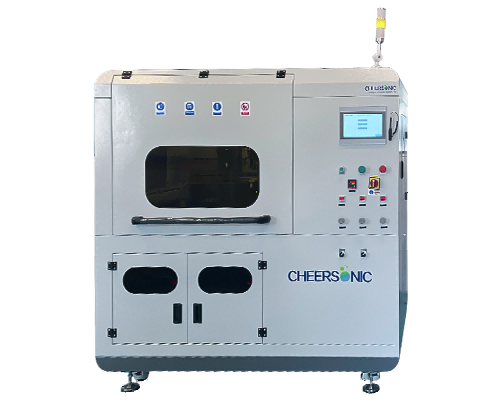Ultrasonic Spraying Carbon Felt and Graphite Felt
Carbon felt and graphite felt: characteristics and application of ultrasonic spraying
In many fields such as energy and industry, carbon felt and graphite felt play a key role with their unique properties. Today, let’s take a deeper look at these two materials and the new changes brought to them by ultrasonic spraying technology.
Carbon felt generally mentioned is mostly polyacrylonitrile-based carbon felt, which can be subdivided into soft carbon felt and hard carbon felt (i.e., soft carbon felt cured by adding glue). From the perspective of production temperature, domestically, carbon felt with a processing temperature of more than 900 degrees is usually called carbon felt, while graphite felt with a processing temperature of about 1700 degrees is called graphite felt. In general, carbon felt and graphite felt cover four categories: carbon felt, graphite felt, hard carbon felt, and hard graphite felt.
Globally, carbon felt mainly includes three types: polyacrylonitrile (PAN)-based carbon felt, viscose-based carbon felt, and asphalt-based carbon felt. Carbon fiber is carbonized at about 1000 degrees Celsius, and the carbon content of carbon fiber felt is about 90%, and its use temperature is also roughly 1000 degrees Celsius. When carbon fiber felt is heated to above 2000 degrees Celsius in an oxygen-free environment, it is converted into graphite fiber. The carbon content of the graphite fiber felt can reach more than 99%, and the use temperature can soar to 2000 degrees Celsius. It is worth noting that if the carbon fiber felt is in a heat preservation environment above 2000 degrees Celsius, it will trigger further reactions.
Carbon felt and graphite felt have many excellent properties, such as high chemical stability, good conductivity and excellent thermal insulation performance, and are widely used in many fields. In the field of flow batteries, they are often used as electrode materials. However, in practical applications, carbon felt and graphite felt also face some challenges. For example, when used as an electrode, its wettability with the electrolyte needs to be improved, which may affect the efficiency of the battery reaction; the active sites on the surface are limited, which limits the rate of electrochemical reactions.
At this time, ultrasonic spraying technology provides an effective way to optimize the performance of carbon felt and graphite felt. Ultrasonic spraying can accurately and evenly cover the functional materials on the surface of carbon felt and graphite felt. For the problem of improving the wettability with the electrolyte, a layer of special wettability improvement material can be sprayed by ultrasonic spraying. The high-frequency vibration of ultrasound can make the spraying material evenly adhere to the fiber surface of carbon felt and graphite felt in an extremely fine particle state, forming an ultra-thin and uniform coating. This can not only greatly improve its contact effect with the electrolyte, promote the diffusion of the electrolyte in the pores of the material, but also increase the active sites. For example, when spraying a coating containing specific metal catalysts, these metal catalysts can serve as new active sites to accelerate the electrochemical reaction.
In high-temperature application scenarios, carbon felt and graphite felt may have a problem of reduced structural stability due to long-term exposure to high temperature. Ultrasonic spraying can spray a layer of high-temperature resistant and anti-oxidation coating on its surface. This coating can form a dense protective film at high temperature, effectively blocking the erosion of oxygen and other factors on carbon felt and graphite felt, enhancing its structural stability and extending its service life. Moreover, due to the precision of ultrasonic spraying, it will not cause obvious damage to the original pore structure and other characteristics of carbon felt and graphite felt, and retain their own superior performance to the greatest extent.
At present, with the booming development of the new energy industry, the demand for high-performance carbon felt and graphite felt materials is growing. Ultrasonic spraying technology, with its unique advantages in improving the performance of carbon felt and graphite felt, is gradually becoming a key force in promoting the widespread application and performance improvement of these materials in more fields. Whether in liquid flow batteries, high-temperature insulation or other scenarios requiring high-performance materials, carbon felt and graphite felt treated with ultrasonic spraying are expected to show more outstanding performance and inject new vitality into the development of various industries.
About Cheersonic
Cheersonic is the leading developer and manufacturer of ultrasonic coating systems for applying precise, thin film coatings to protect, strengthen or smooth surfaces on parts and components for the microelectronics/electronics, alternative energy, medical and industrial markets, including specialized glass applications in construction and automotive.
Our coating solutions are environmentally-friendly, efficient and highly reliable, and enable dramatic reductions in overspray, savings in raw material, water and energy usage and provide improved process repeatability, transfer efficiency, high uniformity and reduced emissions.
Chinese Website: Cheersonic Provides Professional Coating Solutions

